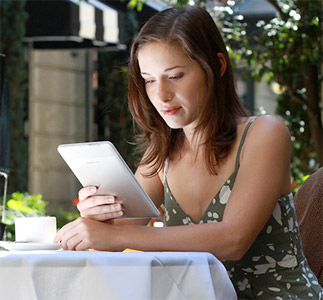5 Tips to Using Gift Cards for E-Book Purchases

After a bumpy start, major booksellers are now allowing e-book owners to use gift cards for content purchases. While such gift cards make great presents, e-book readers also buy gift cards themselves to make purchases of less than $1, which can clutter credit cards.
Perhaps in response to complaints throughout e-book forums and on blogs, Barnes & Noble announced on Nov. 16 that gift cards may be used to purchase Barnes & Noble e-books for its digital book reader the Nook. Beginning in mid-December, both physical and online B&N gift cards will be accepted online, as well as through the Nook and other wireless devices compatible with the B&N eReader software.
Amazon.com originally didn't allow Kindle Reader users to download Kindle e-books with Amazon.com gift cards but also changed its policy in response to public discussion.
Since the most important part of an e-book device is its library, these changes should have a major impact on the gift-card industry for books this Christmas. If you're considering giving a gift card for a reader or e-books this Christmas, here's a rundown of factors you'll need to consider before purchasing one of the three most popular readers.
1. Consider the Library
The e-book library is the most important factor to consider when selecting a reader. Consider the last five to 10 books the reader purchased and search for them on the Barnes & Noble, Borders/Sony and Amazon.com e-book sites. If a particular library has a majority of these books, chances are it will have most of the books the reader will select in the future. You'll also want to consider if a device downloads newspapers and magazines for those interested in these mediums.
2. Library Usability
Do a bit of surfing on each site and determine how easy or difficult it is to find the books you want. Can you find a book if you don't know the exact name of the book or get the author's name wrong? Also consider how books can be downloaded. Must users tether the reader to a computer with Internet access, as with Sony's cheaper reader, or can they download e-books directly through the device, as with the Kindle or Nook? Before buying, consider where and how the reader will use their device. For example, frequent travelers will appreciate the ability to download a new book anywhere at anytime and technophones may be confused by the requirements of hooking up to a computer for downloads.
3. Screen Size and Readability
The smallest Nook and the regular Kindle are more portable but the larger Kindle DX screen allows readers to adjuste the font size. That makes the more expenssive DX a good present for readers with poor vision, but others may not want to spent more money for this feature.
4. Abilities
Each reader has its advantages and disadvantages. For example, the new Nook device has a small color screen that allows easier content locating (but no keyboard), the ability to "lend"digital books to a friend and built-in wireless Internet. As a new-to-market product, however, it's relatively untested for common use and Sony has sold out its initial supply. The company announced in mid November that orders placed before Christmas won't be received until Jan. 4. Visit TopTenReviews.com for a comprehensive comparison of e-book readers.
5. Lifespan
Other e-book readers are expected to launch soon, but you may want to keep an eye on Apple. The ever-innovatiive company figures into any discussion of consumer technology. Remember how the release of Apple's iPhone entirely changed the cell phone market? CEO Steve Jobs has suggested Apple may be working on a tablet-type computer (a laptop without a keyboard) that would serve as an e-book reader. As with Apple's other devices, the innovative company might throw in such extras as a web browser, video camera and any other function possible--just because they can. This new product could be the perfect device that makes other readers obsolete in the public eye.